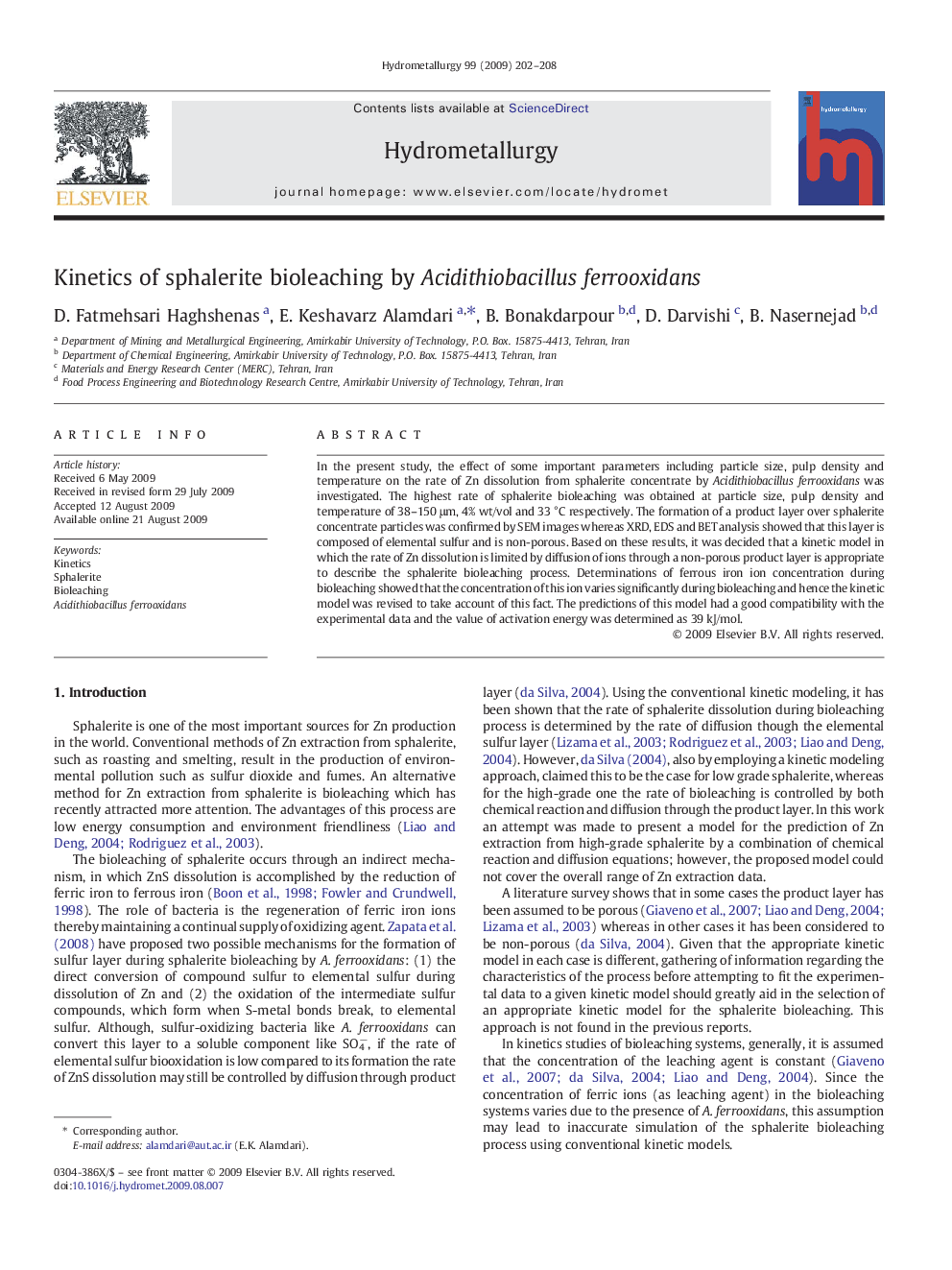| Article ID | Journal | Published Year | Pages | File Type |
|---|---|---|---|---|
| 213072 | Hydrometallurgy | 2009 | 7 Pages |
In the present study, the effect of some important parameters including particle size, pulp density and temperature on the rate of Zn dissolution from sphalerite concentrate by Acidithiobacillus ferrooxidans was investigated. The highest rate of sphalerite bioleaching was obtained at particle size, pulp density and temperature of 38–150 μm, 4% wt/vol and 33 °C respectively. The formation of a product layer over sphalerite concentrate particles was confirmed by SEM images whereas XRD, EDS and BET analysis showed that this layer is composed of elemental sulfur and is non-porous. Based on these results, it was decided that a kinetic model in which the rate of Zn dissolution is limited by diffusion of ions through a non-porous product layer is appropriate to describe the sphalerite bioleaching process. Determinations of ferrous iron ion concentration during bioleaching showed that the concentration of this ion varies significantly during bioleaching and hence the kinetic model was revised to take account of this fact. The predictions of this model had a good compatibility with the experimental data and the value of activation energy was determined as 39 kJ/mol.
